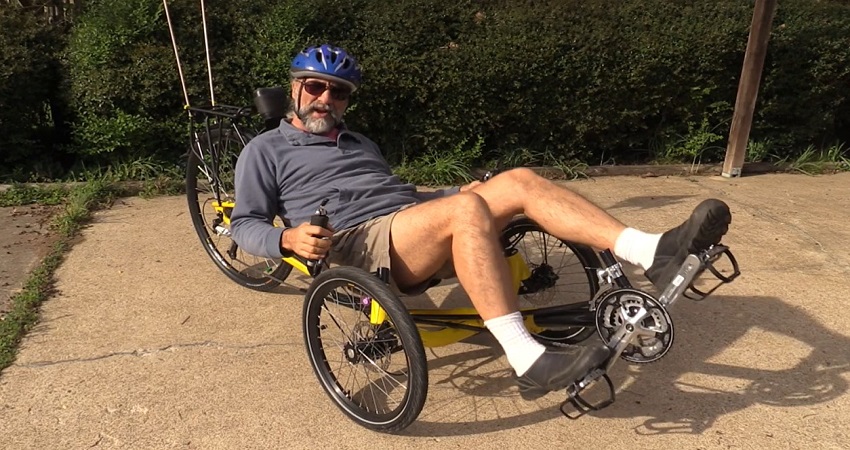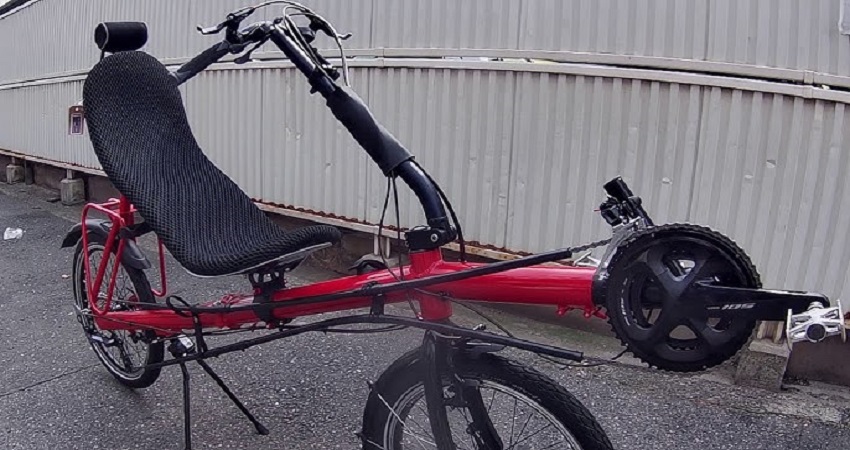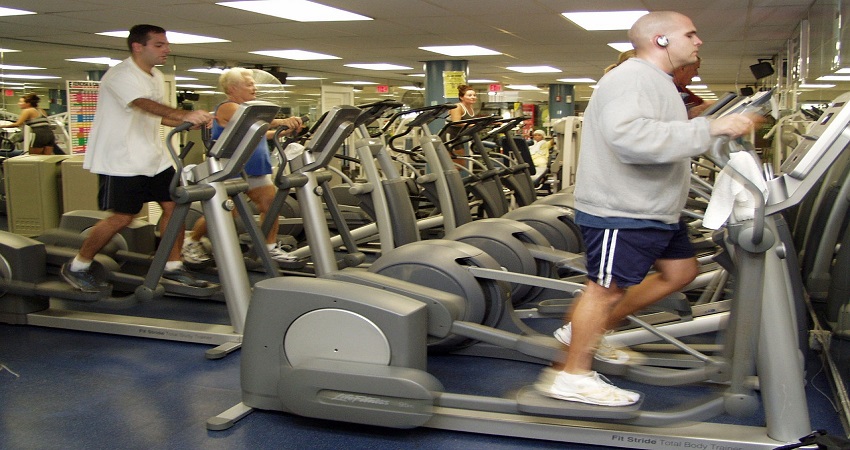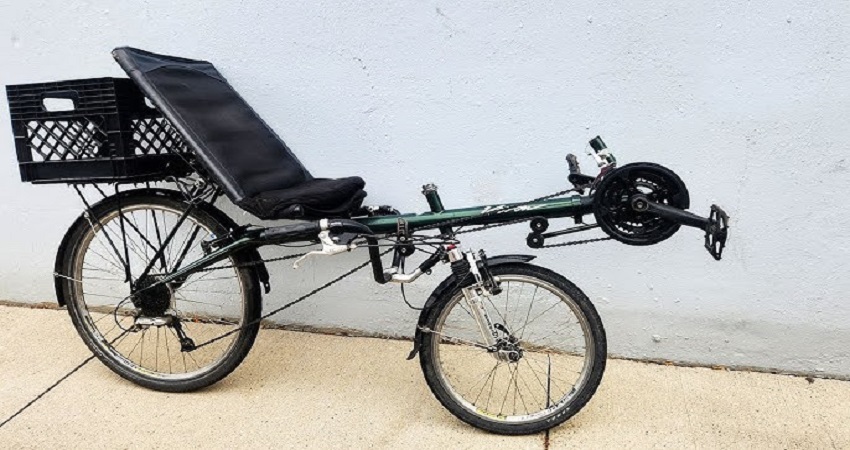
The disadvantage of a recumbent bike is its limited upper body workout potential. Recumbent bikes primarily focus on lower body muscles and offer minimal engagement for the upper body.
As a result, users may miss out on the opportunity to strengthen their arms, shoulders, and core. For those seeking a comprehensive full-body workout, this limitation could be a drawback. However, if your fitness goals are primarily centered around lower body strength and cardiovascular fitness, a recumbent bike may still be an effective option.
Incorrect Bike Fit
One of the disadvantages of using a recumbent bike is an incorrect bike fit. A proper bike fit is crucial for comfort, safety, and optimum performance. When the bike is not properly fit to your body, it can lead to various issues that affect your overall biking experience.
Seat Position
The seat position is a key factor that affects the comfort and efficiency of your recumbent bike ride. If the seat is not adjusted correctly, it can result in discomfort and even pain during your workout. A seat that is too far forward or backward can cause unnecessary strain on your lower back, hips, and knees. This can lead to muscle fatigue, joint pain, and even injuries in the long run.
On the other hand, a seat that is too high or too low can negatively impact your pedaling technique and efficiency. A seat that is too high can cause your hips to rock side to side, leading to an inefficient pedal stroke and decreased power output. Conversely, a seat that is too low can limit your range of motion and prevent you from fully extending your legs, resulting in a less effective workout.
Handlebar Position
The handlebar position is another crucial aspect of the bike fit that can affect your overall experience with a recumbent bike. If the handlebars are not adjusted properly, it can lead to discomfort, poor control, and even increased risk of injury.
Incorrect handlebar position can result in strain on your neck, shoulders, and wrists. If the handlebars are too far away, you may have to stretch too much to reach them, leading to shoulder and neck pain. On the other hand, if the handlebars are too close, it can cause wrist pain and even numbness in your hands.
Additionally, handlebars that are positioned too high or too low can also affect your riding comfort. Handlebars that are too high can cause your shoulders to hunch up, leading to tension and discomfort in your upper back. Conversely, handlebars that are too low can lead to excessive strain on your lower back and neck.
Overall, an incorrect bike fit, including seat position and handlebar position, can significantly impact your enjoyment and performance during a recumbent bike workout. It is important to take the time to properly adjust your bike to ensure a comfortable and safe ride.
Limited Muscle Activation
While recumbent bikes offer numerous benefits for those seeking a low-impact cardiovascular workout, they do have some disadvantages to consider. One key drawback is the limited muscle activation that occurs during a recumbent bike session. Let’s delve into two specific aspects where this limitation becomes apparent: lack of upper body engagement and reduced core activation.
Lack Of Upper Body Engagement
Recumbent bikes primarily focus on the lower body, neglecting the opportunity to engage the upper body muscles. This stems from the seated position and the design of the bike, which places the rider’s legs in front while providing support to the back and glutes. In conventional cycling or upright bikes, the act of maintaining balance engages the arms, shoulders, and back muscles. However, with a recumbent bike, this component is significantly diminished or even absent.
This lack of upper body engagement can be seen as both a disadvantage and an advantage, depending on one’s fitness goals and preferences. If you are looking to primarily target and strengthen your lower body muscles, a recumbent bike may be well-suited for you. However, if you desire a more comprehensive full-body workout, incorporating your upper body muscles, you may want to consider other exercise options.
Reduced Core Activation
In addition to limited upper body engagement, recumbent bikes also provide reduced activation for the core muscles. The core encompasses various muscles in the abdomen, lower back, and hips, which play a crucial role in stability and postural support. Due to the reclined position on a recumbent bike, the core muscles do not need to work as hard to maintain stability compared to other exercises, such as traditional cycling or running.
While this reduced core activation can be advantageous for individuals with certain conditions like lower back pain or injuries, it can be a disadvantage for those seeking to strengthen and tone their core muscles. For individuals looking to improve core strength and stability, incorporating exercises such as planks, crunches, or yoga poses may be necessary to complement the limited engagement experienced on a recumbent bike.
| Muscle Groups | Recumbent Bike | Upright Bike |
|---|---|---|
| Legs | Highly activated | Highly activated |
| Upper Body | Minimally engaged | Significantly engaged |
| Core | Minimally engaged | Moderately engaged |
Understanding the limited muscle activation on a recumbent bike is essential when deciding if it aligns with your fitness goals. While it is highly effective for cardiovascular fitness and lower body strengthening, it may not provide the comprehensive workout that targets the upper body and core muscles. Evaluate your personal objectives and consider incorporating other exercises or equipment to address these areas that may be lacking during a recumbent bike session.
Less Calorie Burn
Recumbent bikes have a disadvantage in that they burn fewer calories compared to other types of bikes due to their seated position, resulting in decreased overall intensity during workouts.
In addition to the advantages of a recumbent bike, it is important to consider the potential disadvantages. One notable disadvantage is that recumbent bikes generally offer less calorie burn compared to other forms of exercise. This can be attributed to two main factors: lower intensity and reduced cardiovascular challenge.
Lower Intensity
The lower intensity of recumbent biking can result in fewer calories being burned during a workout session. Compared to upright bikes or other high-intensity activities like running or cycling, the seated position of a recumbent bike provides a more relaxed and comfortable experience. While this can be advantageous for individuals with joint or back issues, it may not provide the same level of calorie burn as more intense exercises.
Reduced Cardiovascular Challenge
In addition to the lower intensity, recumbent bikes generally offer a reduced cardiovascular challenge. Because the body is in a reclined position, the heart rate tends to stay lower compared to upright or high-intensity exercises. While this can be beneficial for those looking for a more leisurely workout or individuals with specific health conditions, it also means fewer calories are burned during the exercise session.
It is important to note that the level of calorie burn on a recumbent bike ultimately depends on the individual’s effort, duration of the workout, and resistance settings. Some people may still experience a satisfactory calorie burn on a recumbent bike, especially when incorporating interval training or increasing the resistance. However, if the main goal is to maximize calorie burn and achieve higher intensity workouts, other forms of exercise may be more suitable.
Decreased Bone Density
Recumbent bikes have gained popularity in recent years due to their ergonomic design and comfort. However, this type of exercise bike does have its disadvantages. One of the main drawbacks is the potential for decreased bone density, which can negatively impact overall bone health. Let’s explore the two specific factors that contribute to this disadvantage:
Lack Of Weight-bearing
A major reason behind the decreased bone density associated with recumbent bikes is the lack of weight-bearing exercise they provide. Unlike traditional upright bikes or weightlifting exercises, recumbent bikes place the body in a reclined position. This means that minimal stress is exerted on the bones, resulting in reduced bone remodeling and weakened bone structure.
Moreover, recumbent bike workouts typically involve continuous pedaling without putting any additional strain on the bones. While this may seem advantageous for individuals with joint issues or injuries, it also means that the body misses out on the benefits of weight-bearing exercise.
| Exercise Type | Benefits for Bone Density |
|---|---|
| Weightlifting | Stimulates bone growth and strengthens bones due to the resistance provided by weights. |
| Upright Cycling | Involves a more weight-bearing position, benefiting bone health through continuous impact and muscle contractions. |
| Recumbent Cycling | Offers minimal weight-bearing exercise, leading to decreased bone density over time. |
Lower Impact
In addition to the lack of weight-bearing exercise, the lower impact nature of recumbent bikes contributes to decreased bone density. The position of the body during recumbent cycling reduces the stress placed on joints, making it a safer option for individuals with arthritis or joint injuries. However, this lower impact also means that the bones are not exposed to the necessary strain required for maintaining or improving bone density.
While recumbent bikes are an excellent choice for individuals with specific conditions or those seeking a lower impact workout, it’s essential to be aware of the potential consequences for bone health. In order to mitigate the disadvantages, individuals using recumbent bikes should consider incorporating weight-bearing exercises into their fitness routines to help maintain optimal bone density.
- Tip: If you’re concerned about bone health, try alternating between recumbent bike workouts and weight-bearing exercises to ensure a well-rounded fitness routine.
By understanding the drawbacks of recumbent bikes, individuals can make informed decisions about their exercise choices and take steps to prevent decreases in bone density.
Limited Terrain Variation
While recumbent bikes offer numerous advantages, one key disadvantage is their limited terrain variation. Unlike traditional upright bikes, recumbent bikes are not well-suited for rough and uneven surfaces, making them less versatile for outdoor adventures.
Difficulty On Uneven Surfaces
Recumbent bikes tend to struggle when faced with uneven or bumpy terrain. The low height and long wheelbase of these bikes can make it challenging to maneuver over rocks, sandy surfaces, or gravel paths. Riders may find it harder to maintain stability and control, increasing the risk of accidents or falls. Navigating through off-road trails or unpaved roads can also become a uphill battle for recumbent bike riders, limiting their ability to explore rugged terrains.
Challenging Climbs
Climbing steep hills and challenging inclines can be demanding on a recumbent bike. The relaxed seated position and lower center of gravity that provide comfort and aerodynamic benefits on flat terrain can work against riders when faced with uphill climbs. Recumbent bikes often lack the necessary gearing options, affecting their ability to conquer steep gradients effectively. Riders may find themselves exerting more effort and struggling to maintain a consistent pace, making climbs much more demanding and strenuous compared to upright bikes.
Furthermore, the design of recumbent bikes poses challenges when it comes to weight distribution during uphill rides. As the rider is positioned in a reclined posture, some weight is shifted towards the back of the seat, causing a reduction in traction on the front wheel. This can lead to the front wheel lifting off the ground, affecting steering and stability, especially during steep climbs.
While recumbent bikes may not be the ideal choice for off-road adventures or challenging terrains, they still offer many benefits for other types of riding. Whether it’s their superior comfort, reduced strain on the joints, or improved aerodynamics, recumbent bikes continue to be a popular choice for fitness enthusiasts, endurance riders, and individuals seeking a more relaxed cycling experience on smoother surfaces.
Frequently Asked Questions Of What Is The Disadvantage Of Recumbent Bike?
What Are The Disadvantages Of Using A Recumbent Bike?
Using a recumbent bike can cause strain on the neck and back due to the reclined position. Additionally, the low impact nature of recumbent biking may not provide the same level of cardiovascular workout as upright biking. Finally, recumbent bikes may take up more space and be harder to transport compared to other exercise equipment.
Are Recumbent Bikes Suitable For Everyone?
Recumbent bikes are generally safe and suitable for most individuals, including those with joint issues or balance problems. However, people with certain medical conditions, such as severe back pain or hip injuries, should consult with their healthcare provider before using a recumbent bike.
Can Recumbent Bikes Help With Weight Loss?
While recumbent biking can contribute to weight loss when combined with a healthy diet and overall fitness plan, it may not burn calories as quickly as other forms of exercise such as running or high-intensity interval training.
Do Recumbent Bikes Target Specific Muscle Groups?
Recumbent biking primarily engages the lower body muscles, including the quadriceps, hamstrings, glutes, and calves. However, it does not specifically target the core or upper body muscles, making it necessary to incorporate additional exercises for a full-body workout.
Conclusion
Although recumbent bikes offer several advantages for individuals seeking a low-impact and comfortable exercise experience, it is essential to consider their disadvantages as well. These include limited intensity levels, reduced muscle engagement, and a higher price range compared to other exercise equipment.
However, with proper research and consideration of personal fitness goals, a recumbent bike can still be a suitable choice for individuals looking to improve cardiovascular health and maintain an active lifestyle.




